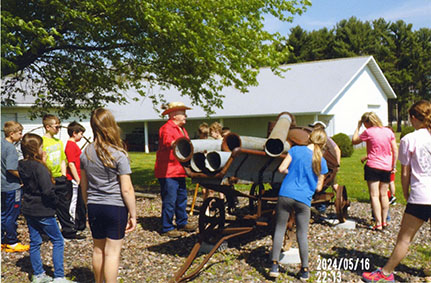Heritage Days show youth farming equipment of old


Bill Greenwood spoke May 17, to Cadott students, about early farming and road construction equipment, as part of Heritage Days at the Cadott Historical Society. Submitted Photo


Bill Greenwood spoke May 17, to Cadott students, about early farming and road construction equipment, as part of Heritage Days at the Cadott Historical Society. Submitted Photo